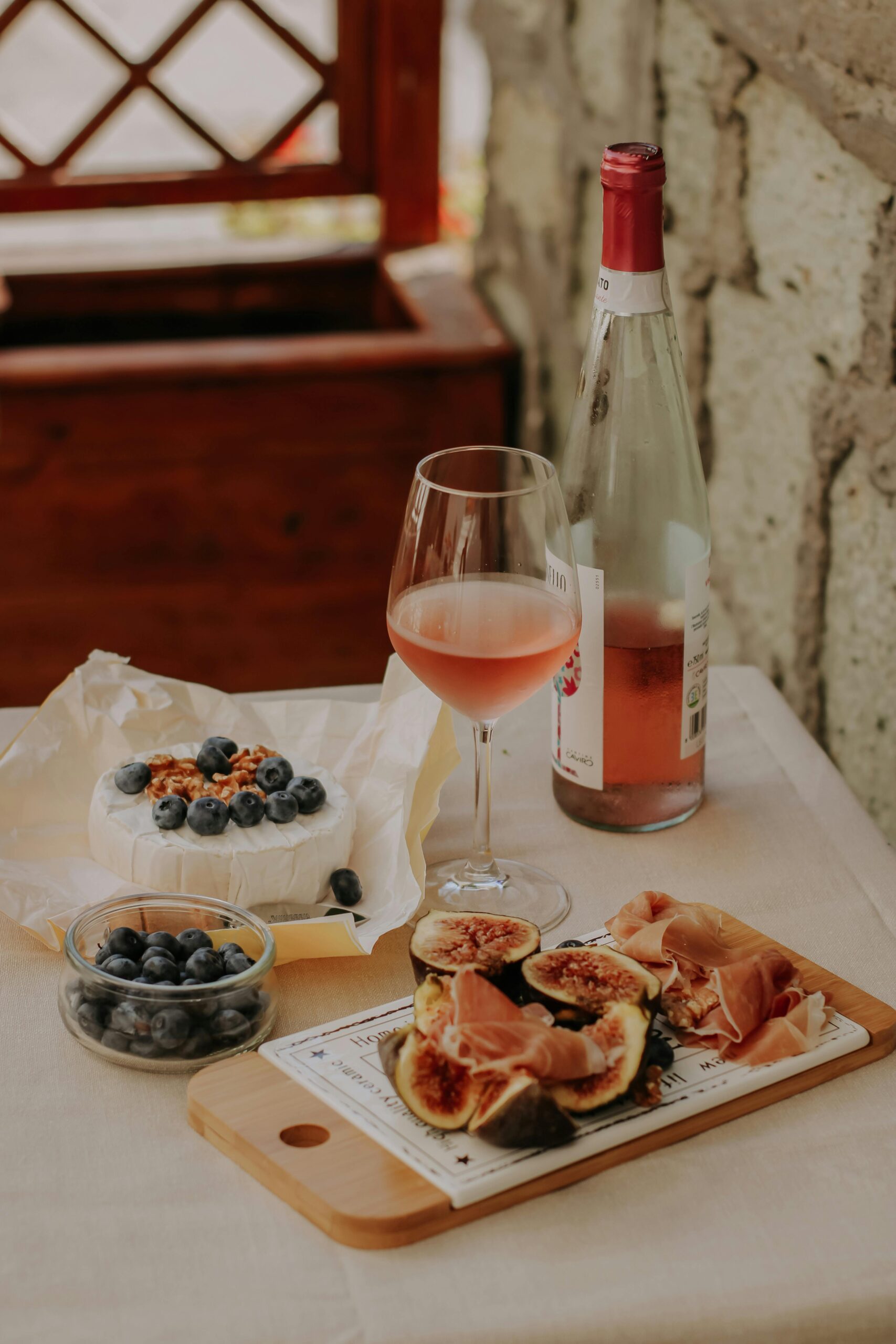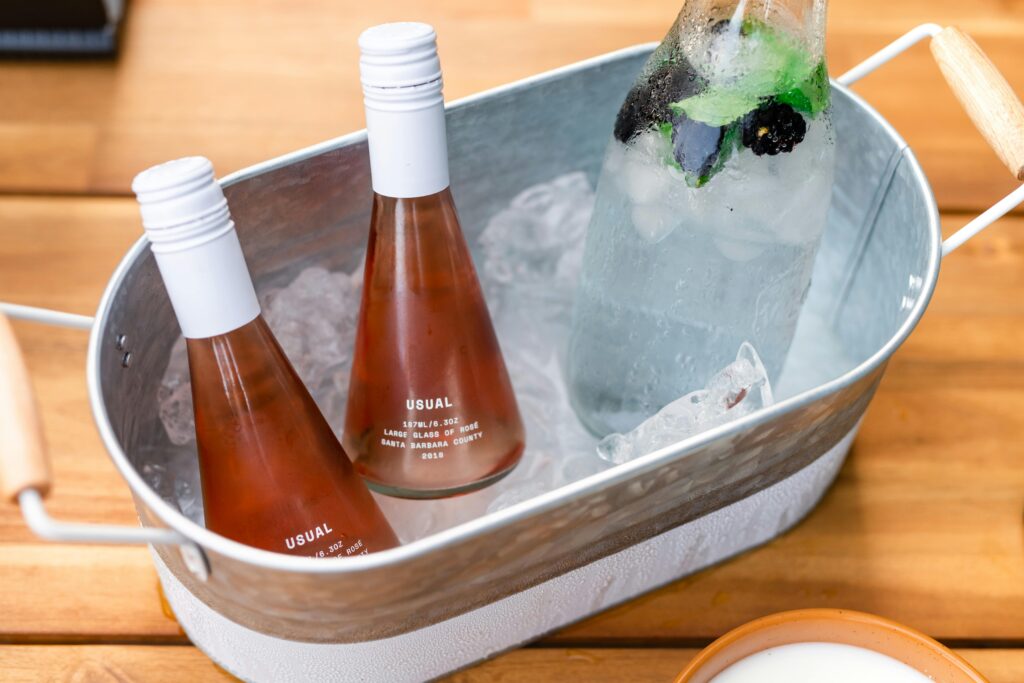I’ve always been a fan of a good wine, and in recent years, rosé has definitely found its place in my rotation. Whether I’m at a summer BBQ, heading to a mate’s party, or just relaxing after work, a glass of chilled rosé hits the spot. What I’ve found most appealing about rosé wines is their versatility—there’s something for everyone, whether you prefer a dry, sparkling, or slightly sweeter drop.
In this guide, I’ll walk you through the best rosé wines out there, covering everything from sparkling options to the most popular brands, and how to perfectly pair rosé with food. So, if you’re looking to explore the world of rosé wines or simply want to upgrade your wine game, this guide has you covered.
1. What Exactly is Rosé Wine?
Rosé is one of those wines that fits just about any occasion. It’s made from red grapes but gets its pink colour from the brief contact between the grape skins and the juice during fermentation. The longer the skin contact, the deeper the colour and flavour. What’s unique about rosé is that it bridges the gap between white and red wines—light and refreshing like a white, but with enough character to stand on its own like a red.
There’s a common misconception that rosé is just a sweet wine, but that couldn’t be further from the truth. You’ll find everything from bone-dry rosés to sweet, fruity versions. And then, of course, there’s the sparkling kind, which brings a festive twist to the table.
2. My Picks for the Best Rosé Wines
I’ve tried my fair share of rosé wines, and after countless bottles (all for research, I swear!), I’ve narrowed down some favourites. These are the ones I’d recommend trying if you’re after a top-quality rosé experience.
A. Sparkling Rosé
For those moments when you want to celebrate or just feel a bit fancy, sparkling rosé is the go-to. It’s bubbly, refreshing, and perfect for special occasions. Jansz Premium Rosé from Tasmania is one of my absolute favourites. It’s got those subtle strawberry and cherry flavours that dance on your tongue. Another stellar option is Chandon Brut Rosé, which offers a crisp, dry finish that’s not too overwhelming.
B. Dry Rosé
If you’re like me and lean towards drier wines, there’s plenty of dry rosé options out there that will blow you away. Yarra Valley’s De Bortoli Rosé has an excellent balance of fruity notes with just the right amount of acidity. It pairs beautifully with food but is also perfect on its own. Rosé D’Anjou from France is another great choice for those who prefer a more traditional dry style.
C. Sweet Rosé
Now, I know some people prefer their wine a bit sweeter, and rosé can definitely deliver. Innocent Bystander’s Moscato Rosé is light, fruity, and perfect for a warm day. If you’re new to wine and want something easy to drink, this is a great option. Another sweeter variety worth trying is Yellow Tail Rosé, which is widely available and offers a great balance of sweetness and fresh fruitiness.
3. Top Brands for Rosé Wines
When it comes to rosé, certain brands have mastered the art. These are the ones I trust to consistently deliver top-notch wines.
- Whispering Angel: This brand has a bit of a cult following, and for good reason. Whispering Angel’s rosé is crisp, elegant, and perfect for a warm afternoon. If you’re into more subtle flavours, this is the one to try.
- Jacob’s Creek: Known for producing reliable, quality wines, Jacob’s Creek offers a great rosé that’s affordable and widely available. Their Le Petit Rosé is a classic dry style that’s great for those who enjoy a lighter wine.
- Grant Burge: A more premium option, Grant Burge’s rosé is perfect for when you want to treat yourself. It’s got rich, full flavours that make it stand out from the crowd.
4. Food Pairings for Rosé Wine
One of the best things about rosé is how versatile it is when it comes to food pairings. You can serve it with just about anything, depending on the style.
A. Sparkling Rosé Pairings
When I’m drinking sparkling rosé, I usually go for lighter, elegant dishes. Think seafood—oysters, prawns, or even smoked salmon work beautifully. The bubbles and acidity of sparkling rosé cut through the richness of seafood, making each bite feel refreshing. Another great pairing? Soft cheeses like brie or camembert.
B. Dry Rosé Pairings
Dry rosé pairs well with heartier dishes, especially grilled meats. When I’m hosting a BBQ, I always have a bottle of dry rosé on hand to serve with chicken, pork, or grilled veggies. Mediterranean dishes like hummus, falafel, or a Greek salad also work brilliantly with a glass of dry rosé.
C. Sweet Rosé Pairings
Sweeter rosés are perfect with spicy dishes. If you’re having Thai food, Mexican, or any cuisine with a bit of heat, a sweet rosé will balance the spiciness and cool your palate. For dessert, think fresh fruit or a light berry tart to complement the wine’s sweetness.

5. Choosing the Right Rosé for You
With so many options out there, how do you choose the best rosé? Here are a few tips I’ve picked up along the way:
A. Know Your Preferences
Are you after something light and refreshing, or do you prefer a wine with more body? If you like crisp, acidic wines, go for a dry rosé. If you’ve got a sweet tooth, look for wines with notes of strawberries or watermelon.
B. Think About the Occasion
Are you celebrating something special or just having a casual night in? Sparkling rosé is great for celebrations, while a dry or sweet rosé is perfect for a laid-back meal with friends.
C. Experiment with Regions
France might be known for rosé, but Australian winemakers are producing some fantastic bottles as well. Try rosé from regions like Yarra Valley or Margaret River to taste the local offerings, but don’t shy away from exploring international bottles as well.
6. Rosé Trends and What’s Next
As rosé continues to grow in popularity, we’re seeing more and more innovation in the market. There’s been a rise in canned rosé, which is perfect for taking to the beach or a picnic without having to worry about glass bottles. Sustainable winemaking is also becoming more important, with many brands focusing on organic or biodynamic farming practices.
I reckon we’ll continue to see more experimental blends and unique rosé options, especially from local Aussie vineyards. Keep an eye out for rosés made from different grape varieties—there’s more to rosé than just your standard pinot noir!
Conclusion
Whether you’re a die-hard wine lover or just getting started, rosé has something to offer everyone. From sparkling and dry to sweet, the world of rosé wines is full of exciting flavours and possibilities. So grab a bottle, pair it with your favourite meal, and enjoy everything this versatile wine has to offer. And if you’re looking for more detailed wine ratings and reviews before making your next purchase, check out Vivino for trusted insights from fellow wine enthusiasts. Cheers to exploring the world of rosé!
